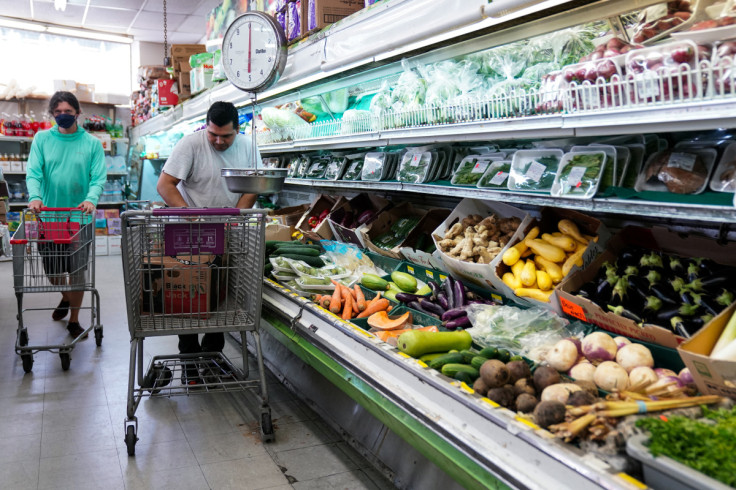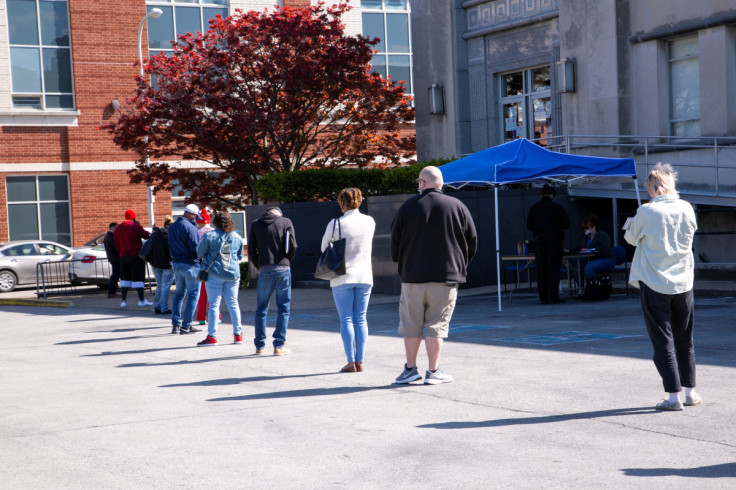U.S. Inflation Cooling As Consumer Prices Fall; Labor Market Still Tight

U.S consumer prices fell for the first time in more than 2-1/2 years in December amid declining prices for gasoline and motor vehicles, offering hope that inflation was now on a sustained downward trend, though the labor market remains tight.
Americans also got some relief at the supermarket, with the report from the Labor Department on Thursday showing food prices posting their smallest monthly increase since March 2021. But rents remained very high and utilities were more expensive.
The report could allow the Federal Reserve to further scale back the pace of its interest rate increases next month. The U.S. central bank is engaged in its fastest rate hiking cycle since the 1980s.
"The mountain peak of inflation is behind us but the question is how steep the downhill is," said Sung Won Sohn, finance and economics professor at Loyola Marymount University in Los Angeles. "To be sure, the efforts by the Federal Reserve have begun to bear fruit, even though it will be a while before the promised land of a 2% inflation rate is here."
The consumer price index dipped 0.1% last month, the first decline since May 2020, when the economy was reeling from the first wave of COVID-19 cases. The CPI rose 0.1% in November.
Economists polled by Reuters had forecast the CPI unchanged. It was third straight month that the CPI came in below expectations.
Gasoline prices tumbled 9.4% after dropping 2.0% in November. But the cost of natural gas increased 3.0%, while electricity rose 1.0%. Food prices climbed 0.3%, the smallest gain since March 2021, after rising 0.5% in the prior month. The cost of food consumed at home increased 0.2%.
In the 12 months through December, the CPI increased 6.5%. That was the smallest rise since October 2021 and followed a 7.1% advance in November. The annual CPI peaked at 9.1% in June, which was the biggest increase since November 1981. Inflation remains well above the Fed's 2% target.
Price pressures are subsiding as higher borrowing costs cool demand, and bottlenecks in the supply chains ease. The Fed last year raised its policy rate by 425 basis points from near zero to a 4.25%-4.50% range, the highest since late 2007. In December, it projected at least an additional 75 basis points of hikes in borrowing costs by the end of 2023.
Excluding the volatile food and energy components, the CPI climbed 0.3% last month after rising 0.2% in November. In the 12 months through December, the so-called core CPI increased 5.7% after advancing 6.0% in November.
U.S. stocks opened higher. The dollar fell against a basket of currencies. U.S. Treasury prices rose.
GOODS DEFLATION
Prices for used cars and trucks fell 2.5%, recording their sixth straight monthly decline. New motor vehicles slipped 0.1%.
Goods prices dropped 1.1% after decreasing 0.3% in November as deflation in this category becomes entrenched. But services, the largest component of the CPI basket, accelerated 0.6% after gaining 0.3% in November.
They are being driven by sticky rents. Owners' equivalent rent, a measure of the amount homeowners would pay to rent or would earn from renting their property, jumped 0.8% after rising 0.7% in November. Independent measures, however, suggest rental inflation is cooling.
The rent measures in the CPI tend to lag the independent gauges. Healthcare costs gained 0.1% after two straight monthly declines. Even stripping out rental shelter, services inflation shot up 0.4% after being unchanged in November.
Still, the moderation in inflation will be welcomed by Fed officials, though they will probably want to see more compelling evidence of abating prices pressures before pausing rate hikes.
The labor market, which has remained tight, will be key in this regard. The unemployment rate is back at a five-decade low of 3.5%. There were 1.7 jobs for every unemployed person in November.
A separate report from the Labor Department on Thursday showed initial claims for state unemployment benefits fell 1,000 to a seasonally adjusted 205,000 for the week ended Jan. 7. Economists had forecast 215,000 claims for the latest week.
Part of the surprise drop in claims reflects challenges adjusting the data for seasonal fluctuations at the start of the year. Nevertheless, claims have remained low despite high- profile layoffs in the technology industry as well as job cuts in interest rate-sensitive sectors like finance and housing.
Economists say companies are for now reluctant to send workers home after difficulties finding labor during the pandemic. They, however, expect claims to rise by the second half of the year as higher borrowing costs choke demand and push the economy into recession.
The claims report also showed the number of people receiving benefits after an initial week of aid, a proxy for hiring, dropped 63,000 to 1.634 million in the week ending Dec. 31.
The government reported last week the economy created 223,000 jobs in December, more than double the 100,000 that economists say the Fed wants to see to be confident inflation is cooling.


© Copyright Thomson Reuters 2024. All rights reserved.





















